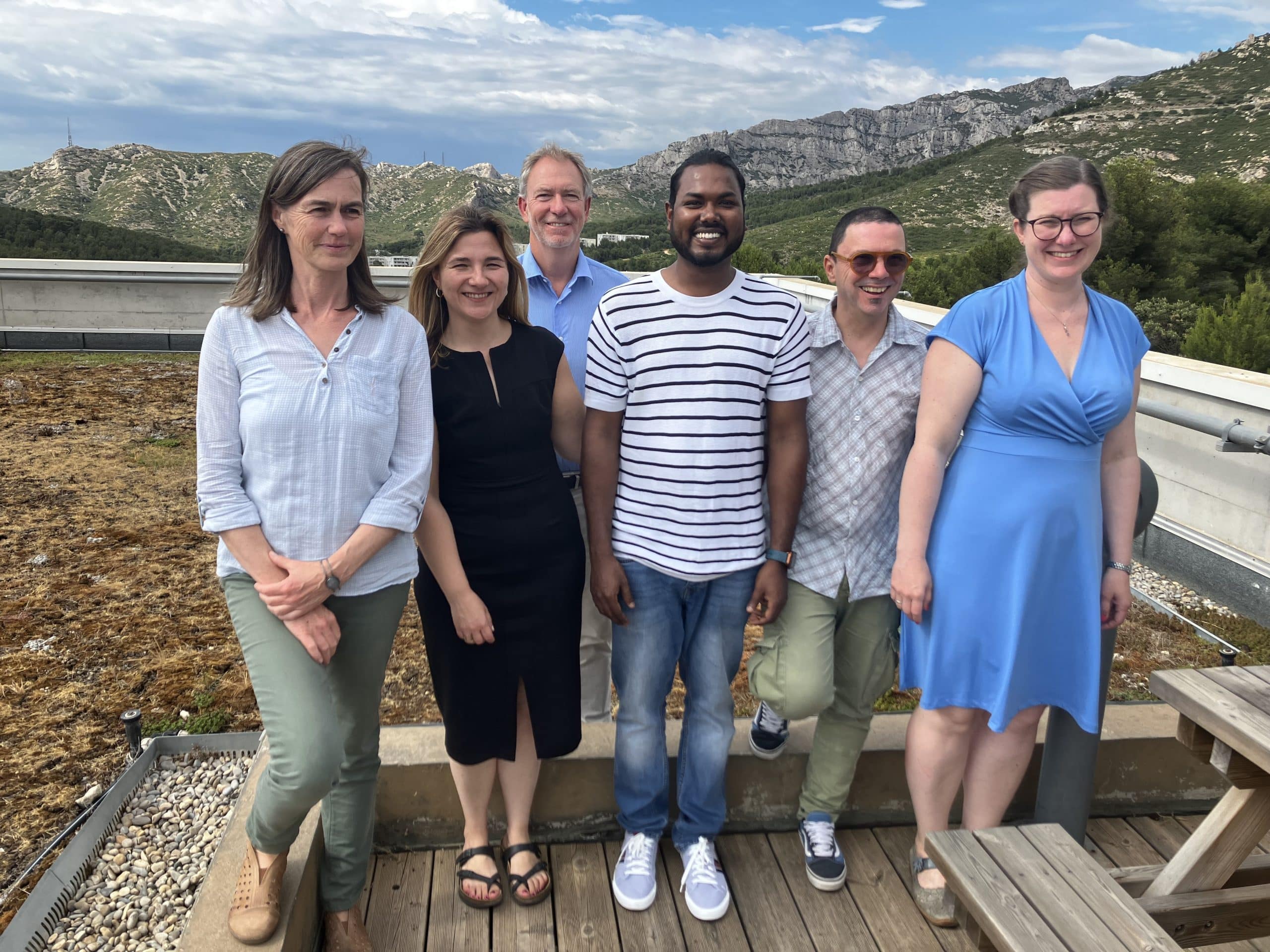Subhadeep Chowdhury defended his thesis on Monday 24 June 2024 at the OCEANOMED amphitheatre on the following topic: Nitrogen fixation in the Indian Ocean: inter-basin and inter-seasonal comparison.

Hanna FARNELID Rapporteur, Associate Professor, Linnaeus University
Ingrid OBERNOSTERER Rapporteur, Research Director, LOMIC
Damien CARDINAL Chairman, Professor, Sorbonne University
Chris BOWLER Examiner, Research Director, IBENS
Mar BENAVIDES Thesis supervisor, Research associate, MIO
Sophie BONNET Thesis co-supervisor, Research Director, MIO
Abstract
Biological nitrogen (N2) fixation by diazotrophs promotes primary productivity and carbon export in about 50 % of the ocean. While this process has been extensively studied in the low latitudes of the Atlantic and Pacific Oceans, the Indian Ocean (IO) has received less attention. While it accounts for 22% of the ocean surface, it represents only around 4% of the global diazotroph database. Understanding N2 fixation in the RO is crucial for improving primary productivity forecasts, particularly given the uncertainty in the representations of this process by Earth system models in the context of climate change. This thesis investigates the importance and controls of N2 fixation and the biogeography of diazotrophs in the RO. In order to provide an overview of the current understanding of diazotrophy in the RO, we first compiled three decades of N2 fixation and DNA data for diazotrophs in this ocean. This analysis revealed annual N2 fixation rates of between 7 and 13 Tg N y-1, with notable variability in certain sub-basins such as the Arabian Sea, the Bay of Bengal and the eastern IO. This variability highlights the need for more comprehensive spatio-temporal sampling in future studies to better understand the variability of diazotrophs and their potential endemicity. We then conducted more detailed studies in the southern and northern regions of the IO, which exhibit contrasting patterns of ocean circulation and biogeochemistry. The southern RO comprises the subtropical gyre and part of the Southern Ocean, both separated by pronounced frontal structures. To the north of the fronts, the waters of the gyre are oligotrophic, while to the south, a high nutrient content and low chlorophyll content prevail. After characterising N2 fixation and diazotroph community composition along the nutrient and trace metal gradients found across the fronts, our results reveal a marked contrast between N2 fixation rates and diazotroph groups. Cyanobacterial diazotrophs (CDs) dominate to the north of the fronts, while non-cyanobacterial diazotrophs (NCDs) predominate to the south. The north of the IO is divided into two sub-basins: the Arabian Sea and the Bay of Bengal, both of which are highly subject to seasonal monsoon variability. We set out to study the impact of monsoons in these regions on diazotrophy, by combining N2 fixation and DNA data with satellite products such as winds, currents and dust deposition. We identified two crucial factors influencing DC dynamics: ocean surface temperature and dust deposition. Wind stress and precipitation also play a significant role in DNC. Most of the studies conducted in northern IO have taken place during summer or winter monsoon periods, but we have found that during the inter-monsoon period N2 fixation and DC dominance reach their highest levels. The conclusions drawn from this thesis highlight the fact that certain areas are emerging as potential diazotrophic hotspots, notably in the Agulhas, the Sri Lanka Dome and the eastern Arabian Sea. These results fill gaps in our understanding of diazotrophy in the IO, revealing essential information on the dynamics of diazotrophs, and contributing to a global understanding of their ecological importance in the region. This new information on diazotrophy in the OI should help to improve the parameterisation of climate models and strengthen the constraints on global net primary productivity projections.
Keywords Nitrogen fixation, Diazotrophs, Cyanobacteria, Non-cyanobacterial diazotrophs, Monsoon, Indian Ocean 6




